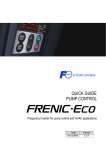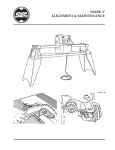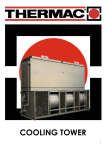Download FRENIC-Ace - Q-TECH
Transcript
High Performance Inverter New F U J I I N V E RT E R S The FRENIC-Ace is the inverter that produces excellent cost-performance; maintains high performance through optimal design. In this way, it can be applied to various machines and devices. 24A1-E-0042 The next generation inverter has arrived Introducing our New Standard Inverter! Enjoy a full range of applications The standard inverter for the next generation, the FRENIC-Ace, can be used in almost any type of application—from fans and pumps to specialized machinery. 3-phase 400V series Nominal applied motor [kW] ND rating Model HD rating Rated output current Model HND rating Rated output current Model HHD rating Rated output current FRN0059E2S-4 39A 45A FRN0059E2S-4 45A FRN0072E2S-4 45A 30 FRN0059E2S-4 59A FRN0072E2S-4 60A FRN0072E2S-4 60A FRN0085E2S-4 60A 37 FRN0072E2S-4 72A FRN0085E2S-4 75A FRN0085E2S-4 75A FRN0105E2S-4 75A 45 FRN0085E2S-4 85A FRN0105E2S-4 91A FRN0105E2S-4 91A FRN0139E2S-4 91A 55 FRN0105E2S-4 105A FRN0139E2S-4 112A FRN0139E2S-4 112A FRN0168E2S-4 112A FRN0203E2S-4 150A 75 FRN0139E2S-4 139A FRN0168E2S-4 150A FRN0168E2S-4 150A 90 FRN0168E2S-4 168A FRN0203E2S-4 176A FRN0203E2S-4 176A 110 FRN0203E2S-4 203A Rating condition Overload current rating Max. ambient temp. 120% -1min 40 Overload current rating Max. ambient temp. 150% -1min 40 Overload current rating Max. ambient temp. 120% -1min 50 Fans, pumps Application Rated output current FRN0059E2S-4 18.5 22 Model Wire drawing Vertical conveyance Winding machines Printing machines Note: The 3-phase 400V 0.1 - 15 kW, 132 kW - 220 kW, 3-phase 200V series, and single-phase 200V will be coming soon. Overload current rating Max. ambient temp. 150% -1min, 50 200% -0.5sec F U J I I N V E RT E R S Type How to read the model number Series name FRN Destination, specialty items Standard motor (kW) FRENIC Series ND 30 37 45 55 75 90 110 Code 0059 0072 0085 0105 0139 0168 0203 HD 22 30 37 45 55 75 90 HND 22 30 37 45 55 75 90 C A E HHD 18.5 22 30 37 45 55 75 China Asia Europe External diagram Fig. A Fig. B MAX.W W1 W2 246.2 66.8 40 W D 66.8 61.3 D2 10 M 6 D2 D1 4 M H 378 H H1 H2 41.4 303.1 41.4 147.2 25 12 12 11 8.3 12 32.6 MAX.D D3 40 25 8 Inverter type FRN0059E2S-4 FRN0072E2S-4 Fig A FRN0085E2S-4 Three-phase 400V FRN0105E2S-4 FRN0139E2S-4 FRN0168E2S-4 FRN0203E2S-4 512 530 205 243 19 8 Series 312 288 4×M8 357 417 418.5 4×M8 N 9 252 226 (41) 11 OPEN N W W1 W2 W3 W4 H H1 H2 D D1 D2 D3 250 — — — — 400 — — 195 105 90 — 326.2 320 240 310.2 304 550 530 500 261 140 255 615 595 565 361.2 355 275 345.2 339 675 655 625 155 270 740 720 690 MAX.W3 W4 8 8 240 Dimensions (mm) B 115 276 M N 2× 10 10 F U J I I N V E RT E R S Customizable logic Customizable logic function is available as a standard feature. FRENIC-Ace has built-in customizable logic functions with a maximum of 100 steps* including both digital and analog operation functions, giving customers the ability to customize their inverters—from simple logic functions to full-scale programming. Fuji also has plans to offer programming templates for wire drawing machines, hoists, spinning machines, and other applications so that the FRENIC-Ace can be used as a dedicated purpose inverter. Example: Hoist crane application Programming the FRENIC-Ace main unit with the required logic for controlling a hoist (1) Set speed program (2) Reset the alarm by using the push-button switch (3) Mechanical limit switch function Dedicated/specialized functions for hoist application implemented by using customizable logic (4) Detect load (5) Automatic speed drive when no load is detected (6) Overload stop function * 200 steps planned for upcoming version upgrade Superior flexibility (coming soon) FRENIC-Ace has readily available interface cards and various types of fieldbus / network to maximize its flexibility. Option Installation type RJ-45 connector PG interface (5V) card PG interface (12/15V) card Optional control terminal block Control terminal block DeviceNet communication card CC-Link communication card PROFIBUS-DP communication card EtherNet/IP communication card ProfiNet-RT communication card CANopen communication card Digital input/output interface card Analog input/output interface card Front face panel Optional front face keypad mount 30kW(ND): option card is built-in Wide variety of functions as a standard feature Sensorless dynamic torque vector control Motor vector control with PG(coming soon / with optional card) Synchronous motor with sensorless vector control(coming soon) 2-channel on-board RS485 communications port Standard CANopen compatibility Removable keypad device Removable control terminal block board F U J I I N V E RT E R S Multi-function keypad (option) FRENIC-Ace has two different multi-function keypads available Multi-function keypad with LCD display: Enhanced HMI functionality (coming soon) USB keypad: Connect to a computer for more efficient operation (set-up, troubleshooting, maintenance, etc) LAN cable USB–USBminiB cable USB keypad Multi-function keypad with LCD screen Functional Safety FRENIC-Ace is equipped with STO functional safety function as a standard. Therefore output circuit magnetic contactors are not required for safe stop implementation. Enhanced standard features position FRENIC-Ace ahead of its class (Safety input: 2CH, output: 1CH). Complies with (coming soon) EN ISO 13849-1: 2008, Cat.3 / PL=e IEC/EN 61800-5-2: 2007 SIL3 (Safety feature: STO) IEC/EN 60204-1: 2005/2006 Stop category 0 IEC/EN 62061: 2005 SIL3 IEC/EN 61508-1 to -7: 2010 SIL3 10 years lifetime design FRENIC-Ace components have a design life of ten years. A longer maintenance cycle also helps to reduce running costs. Main circuit capacitor 10 years* Electrolytic capacitors on PCB 10 years* Cooling fan Design life Life conditions 10 years* Ambient temperature +40°C (104°F) Load rate 100% (HHD specifications) 80% (HND/HD/ND specifications) * ND specifications have a rated current of two sizes higher than HHD specifications, so the life is 7 years. Standards RoHS Directive Standard compliance with European regulations that limit the use of specific hazardous substances (RoHS) <Six hazardous Lead, mercury, cadmium, hexavalent chromium, polybrominated biphenyl substances> (PBB), polybrominated biphenyl ether (PBDE) <About RoHS> Directive 2002/95/EC, issued by the European Parliament and European Council, limits the use of specific hazardous substances in electrical and electronic devices. Global compliance Standard compliance (cominng soon) Europe North America/Canada EC Directives (CE Mark) UL Standard (cUL Certified) F U J I I N V E RT E R S Basic wiring diagram Standard terminal block board model Motor (when cooling fan is installed) Thermal relay Transformer Braking resistor (option) FU FV FM FW Braking resistor (option) (G) MCCB or ELCB DC REACTOR (option) Magnetic contactor (MC) R R1 T1 Fan power AUX input (G) P(+) DB R P(+) (CM) (THR) N(-) (THR) N(-) P(+) U V W to [C1] to [11] · Power voltage switching connector "CN UX" · Fan power connector "CN R" / "CN W" DC/DC Motor Thermal relay U V W C Charge lamp 2 1 (CM) Braking unit BU (option) M 3~ PTC Thermistor TH1 THC E G Ground terminal 2 1 DB DB N(-) P(+) R0 T0 Control power AUX input P F L1/R L2/S L3/T 400V series 380V to 480V 50/60Hz DB P P1 2 1 (G) G Ground terminal 30C RJ45 connector +24VDC 30B 0V 30 SW2 Keypad Data send/receive (RS-485) (EN2) (PLC) SINK Alarm relay output (for any fault) (30A, 30B, 30C) Relay output Option connector (EN1) Safety signal 30A Removable terminal block (PLC) SW1 <Y2> Transistor output 2 [OL] motor overload warning <Y1> Transistor output 1 [RUN] running SOURCE (FWD) Forward operation and stopping command Reverse operation and stopping command <CMY> (REV) Digital input 1 [SS1] Multistep speed selection (X1) Digital input 2 Digital input [SS2] Multistep speed selection (X2) Digital input 3 [SS4] Multistep speed selection Digital input 4 [BX] Coast-to-stop command Digital input 5 [RST] Alarm (error) reset (X3) Current output FMI (4 (0) to 20 mADC) Voltage output FMV (0 to +10 VDC) Pulse output FMP (25 to 32 kp/s) (X4) (X5) (CM) Digital input common [FM] Transistor output Transistor output common Analog output/pulse output [Fout1] output frequency (prior to slip compensation) Analog pulse output SW5 0V [11] Analog output common +10VDC 3 Voltage input for 2 speed setting 1 [13] [12] 0V [11] Analog input Current input for speed setting (+) (-) NOTE Voltage input 12 (0 to +10 VDC) (0 to ±10 VDC) [C1] AI Current input C1 (4 (0) to 20 mADC) PTC thermistor input Voltage input V2 (0 to +10 VDC) SW6 PTC SW4 DX+ DXCAN+ CANRJ45 connector Data send/receive (RS-485) (CAN-BUS) V2 C1 SW6 SW3 0V This wiring diagram is to be used as a reference only when using standard terminal block model. When wiring your inverter and/or before applying power, please follow always the connection diagrams and the relevant information written in the User's Manual. F U J I I N V E RT E R S Standard specifications Item Type FRN Specifications 0059 0072 0085 0105 0139 0168 0203 ND 30 37 45 55 75 90 110 HD 22 30 37 45 55 75 90 HND 22 30 37 45 55 75 90 HHD 18.5 22 30 37 45 55 75 ND 45 55 65 80 106 128 155 HD 34 46 57 69 85 114 134 HND 34 46 57 69 85 114 134 HHD 30 34 46 57 69 85 114 E2S-4 Nominal applied motor [kW] (*1) Rated capacity [kVA] (*2) Three-phase 380–480V (with AVR function) Voltage [V] (*3) Output rating Rated current [A] (*4) Overload current rating ND 59.0 72.0 85.0 105 139 168 203 HD 45.0 60.0 75.0 91.0 112 150 176 HND 45.0 60.0 75.0 91.0 112 150 176 HHD 39.0 45.0 60.0 75.0 91.0 112 150 HD 150% of rated output current -1 min ND, HND 120% of rated output current -1 min HHD 150% of rated output current -1 min, 200% -0.5s 3-phase 380 to 480V, 50Hz/60Hz Voltage/frequency variation Voltage: +10 to -15% (Voltage unbalance: 2% or less (*7)), Frequency: +5 to -5% ND 77.9 94.3 114 140 — — — HD 60.6 77.9 94.3 114 140 — — (no DCR) [A] (*5) HND 60.6 77.9 94.3 114 140 — — HHD 52.3 60.6 77.9 94.3 114 140 — ND 57.0 68.5 83.2 102 138 164 201 Rated current HD 42.2 57.0 68.5 83.2 102 138 164 (with DCR) [A] (*5) HND 42.2 57.0 68.5 83.2 102 138 164 HHD 35.5 42.2 57.0 68.5 83.2 102 138 ND 39 47 58 71 96 114 139 HD 29 39 47 58 71 96 114 HND 29 39 47 58 71 96 114 HHD 25 29 39 47 58 71 96 Required power supply capacity (with DCR) [kVA] (*6) Braking torque [%] (*7) Braking ND 12% 5 to 9% HD 15% 7 to 12% HND 15% 7 to 12% HHD 20% 10 to 15% Starting frequency: 0.1 to 60.0Hz, Braking time: 0.0 to 30.0s, DC braking *5 *6 *7 *8 Braking level: 0 to 100% (HHD specifications), 0 to 80% (HHD/HD specifications), 0 to 60% (ND specifications) Braking transistor Built-in Braking resistor Optional DC reactor (DCR) *1 *2 *3 *4 3-phase 380 to 480V, 60Hz Rated current Input power ND Optional HD, HND Optional HHD Optional Optional Standard Standard Standard Protective structure (IEC60529) IP20 closed type, UL open type Cooling system Fan cooled Weight [kg] 3-phase 380 to 440V, 50Hz Main power (phase, voltage, frequency) 9.5 10 IP00 open type, UL open type 25 26 30 33 40 “Nominal applied motor” refers to the use of a Fuji Electric 4-pole standard motor. “Rated capacity” refers to 440V rating Output voltage cannot exceed the power supply voltage. Must be reduced if carrier frequency (function code F26) is higher than the following settings. ND/HD: Model FRN0059E2S-4 or higher 4 kHz HND: Model FRN0059E2S-4 ; 10kHz: FRN0072E2S-4 to FRN0168E2S-4 ; 6 kHz, FRN0203E2S-4 ; 4 kHz HHD: Model FRN0059E2S-4 to FRN0168 E2S-4 ; 10kHz: FRN0203 E2S-4 ; 6 kHz With a power supply of 500 kVA (if the inverter capacity is over 50 kVA, then 10 times inverter capacity), indicates the calculated value when connected to a %X=5% power supply. When the applied motor has a capacity of 75kW or higher, use a DC reactor. When DC reactor is connected Average braking torque value for the motor alone (varies depending on motor efficiency). Voltage unbalance [%] = (Max. voltage [V] – Min. voltage [V])/Three-phase average voltage [V] × 67 (see IEC/EN 61800-3). Use AC reactor (ACR, optional) for unbalance rates between 2% and 3%. NOTES When running general-purpose motors • Driving a 400V general-purpose motor When driving a 400V general-purpose motor with an inverter using extremely long cables, damage to the insulation of the motor may occur. Use an output circuit filter (OFL) if necessary after checking with the motor manufacturer. Fuji's motors do not require the use of output circuit filters because of their reinforced insulation. • Torque characteristics and temperature rise When the inverter is used to run a general-purpose motor, the temperature of the motor becomes higher than when it is operated using a commercial power supply. In the low-speed range, the cooling effect will be weakened, so decrease the output torque of the motor. If constant torque is required in the low-speed range, use a Fuji inverter motor or a motor equipped with an externally powered ventilating fan. • Vibration When the motor is mounted to a machine, resonance may be caused by the natural frequencies, including that of the machine. Operation of a 2-pole motor at 60Hz or more may cause abnormal vibration. * Study use of tier coupling or dampening rubber. * It is also recommended to use the inverter jump frequencies control to avoid resonance points. • Noise When an inverter is used with a general-purpose motor, the motor noise level is higher than that with a commercial power supply. To reduce noise, raise carrier frequency of the inverter. High-speed operation at 60Hz or more can also result in more noise. When running special motors • Explosion-proof motors When driving an explosion-proof motor with an inverter, use a combination of a motor and an inverter that has been approved in advance. • Brake motors For motors equipped with parallel-connected brakes, their braking power must be supplied from the primary circuit (commercial power supply). If the brake power is connected to the inverter power output circuit (secondary circuit) by mistake, problems may occur. Do not use inverters for driving motors equipped with series-connected brakes. • Geared motors If the power transmission mechanism uses an oillubricated gearbox or speed changer/reducer, then continuous motor operation at low speed may cause poor lubrication. Avoid such operation. • Single-phase motors Single-phase motors are not suitable for inverterdriven variable speed operation. Use three-phase motors. • Measures against surge currents Environmental conditions • Installation location Use the inverter in a location with an ambient temperature range of -10 to 50˚C. The inverter and braking resistor surfaces become hot under certain operating conditions. Install the inverter on nonflammable material such as metal. Ensure that the installation location meets the environmental conditions specified in "Environment" in inverter specifications. Combination with peripheral devices If an overvoltage trip occurs while the inverter is stopped or operated under a light load, it is assumed that the surge current is generated by open/close of the phase-advancing capacitor in the power system. We recommend connecting a DC REACTOR to the inverter. • Megger test When checking the insulation resistance of the inverter, use a 500V megger and follow the instructions contained in the Instruction Manual. Wiring • Installing a molded case circuit breaker (MCCB) • Wiring distance of control circuit Install a recommended molded case circuit breaker (MCCB) or an earth leakage circuit breaker (ELCB) in the primary circuit of each inverter to protect the wiring. Ensure that the circuit breaker capacity is equivalent to or lower than the recommended capacity. • Installing a magnetic contactor (MC) in the output (secondary) circuit If a magnetic contactor (MC) is mounted in the inverter's secondary circuit for switching the motor to commercial power or for any other purpose, ensure that both the inverter and the motor are fully stopped before you turn the MC on or off. Remove the surge killer integrated with the MC. • Installing a magnetic contactor (MC) in the input (primary) circuit When performing remote operation, use twisted shielded wire and limit the distance between the inverter and the control box to 20m. • Wiring length between inverter and motor If long wiring is used between the inverter and the motor, the inverter will overheat or trip as a result of overcurrent (due to high-frequiency current flowing into the stray capacitance). Ensure that the wiring is shorter than 50m. If this length must be exceeded, lower the carrier frequency or mount an output circuit filter (OFL). When wiring is longer than 50m, and sensorless vector control or vector control with speed sensor is selected, execute off-line tuning. • Wiring size Select cables with a sufficient capacity by referring to the current value or recommended wire size. Do not turn the magnetic contactor (MC) in the primary circuit on or off more than once an hour as an inverter fault may result. If frequent starts or stops are required during motor operation, use FWD/REV signals. • Protecting the motor The electronic thermal facility of the inverter can protect the general-purpose motor. The operation level and the motor type (general-purpose motor, inverter motor) should be set. For high-speed motors or water-cooled motors, set a small value for the thermal time constant to protect the motor. If you connect the motor thermal relay to the motor with a long cable, a high-frequency current may flow into the wiring stray capacitance. This may cause the relay to trip at a current lower than the set value for the thermal relay. If this happens, lower the carrier frequency or use the output circuit filter (OFL). • Discontinuance of power-factor correcting capacitor Do not mount power factor correcting capacitors in the inverter (primary) circuit. Use a DC REACTOR to improve the inverter power factor. Do not use power factor correcting capacitors in the inverter output circuit (secondary). An overcurrent trip will occur, disabling motor operation. • Wiring type Do not use multicore cables that are normally used for connecting several inverters and motors. • Grounding Securely ground the inverter using the grounding terminal. Selecting inverter capacity • Driving general-purpose motor Select an inverter according to the applicable motor ratings listed in the standard specifications table for the inverter. When high starting torque is required or quick acceleration or deceleration is required, select an inverter with a capacity one size greater than the standard. • Driving special motors Select an inverter that meets the following condition: Inverter rated current > Motor rated current. Transportation and storage When transporting or storing inverters, follow the procedures and select locations that meet the environmental conditions according to the inverter specifications. • Discontinuance of surge killer Do not mount surge killers in the inverter output (secondary) circuit. • Reducing noise Use of a filter and shielded wires are typical measures against noise to ensure that EMC Directives are met. Gate City Ohsaki, East Tower, 11-2, Osaki 1-chome, Shinagawa-ku, Tokyo 141-0032, Japan Phone: +81-3-5435-7057 Fax: +81-3-5435-7420 URL: http://www.fujielectric.com/ Printed in Japan 2013- 02(B13/B13)CM 20 FOLS











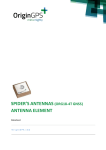
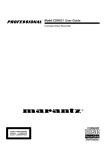

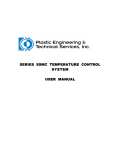
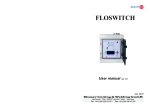

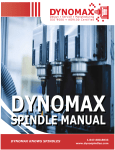
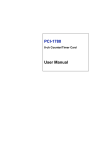
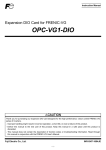

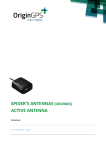
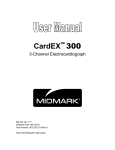
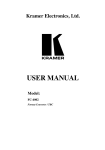
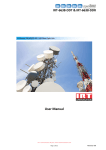

![SP AF 28-105mm F/2.8 LD Aspherical [IF] (Model 176A)](http://vs1.manualzilla.com/store/data/005740924_1-d061f049cd68a1b27fa9e7b373db24a2-150x150.png)
